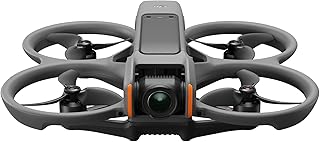DJI Drones for Search and Rescue: Saving Lives
DJI drones have become invaluable tools in the field of search and rescue, revolutionizing how we find and rescue people in need. Their versatility, portability, and advanced capabilities offer a unique advantage in various scenarios, making them essential for saving lives.
Advantages of DJI Drones in Search and Rescue:
* Rapid Deployment: Drones can be deployed quickly and easily, reaching areas inaccessible by foot or vehicle, including rugged terrain, dense forests, and disaster zones.
* Aerial Reconnaissance: Equipped with high-resolution cameras, drones provide real-time aerial imagery, allowing rescuers to quickly assess the situation and locate missing persons.
* Thermal Imaging: Thermal cameras enable drones to detect heat signatures, making it possible to find victims trapped under debris or hidden in darkness.
* Live Video Streaming: Real-time video feeds from drones allow rescue teams to make informed decisions and coordinate their efforts effectively.
* Data Collection and Analysis: Drones can capture aerial data like 3D models and maps, providing valuable insights for search planning and rescue operations.
Applications in Search and Rescue:
* Disaster Relief: Following earthquakes, floods, or other natural disasters, drones are instrumental in assessing the damage and locating survivors amidst the chaos.
* Missing Person Searches: Drones equipped with thermal cameras and visual sensors are used to cover vast areas quickly, increasing the chances of finding missing people.
* Mountain Rescue: Drones are ideal for searching treacherous terrain and rescuing hikers or climbers who have been injured or lost.
* Water Rescue: Drones with water-resistant capabilities can be used to search for missing swimmers or boaters in lakes, rivers, and oceans.
Case Studies:
* The 2017 Nepal Earthquake: Drones were deployed to map the damage and locate survivors in the remote and difficult-to-access areas of Nepal, saving countless lives.
* The 2018 California Wildfires: Drones were instrumental in assisting firefighting efforts by providing real-time aerial imagery and locating hotspots, allowing firefighters to combat the flames effectively.
Future of Drones in Search and Rescue:
With advancements in technology, drones are becoming even more sophisticated. Features like AI-powered image analysis, autonomous flight capabilities, and integration with communication networks will further enhance their effectiveness in search and rescue operations.
Conclusion:
DJI drones have proven to be essential tools in search and rescue, enabling faster response times, increased efficiency, and ultimately, saving lives. Their adaptability, advanced features, and continuous development make them a vital asset in various rescue scenarios, ensuring that hope is always within reach.


